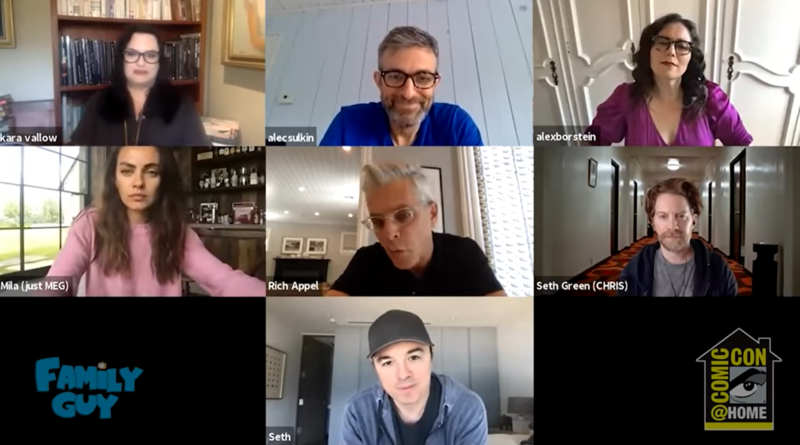Did SDCC’s Comic-Con@Home Miss the Mark?
COVID-19 has wreaked havoc on the entertainment industry, from shutting down entire sports to halting movie production and releases almost indefinitely. One of the biggest gut-punches of these unusual times is the cancellation of San Diego’s Comic-Con, at least in its traditional format.
I’m sure most people have heard of San Diego Comic-Con, which is the Comic-Con. When you hear someone say “Comic-Con” they probably mean that one, though there are several comic conventions around the world. SDCC is the big one, though, with over 150,000 annual attendees.
This year, packing 150,000 people into an enclosed space was not an option, especially as the US is seeing coronavirus cases skyrocket. But the good people at SDCC didn’t want to leave fans with nothing. So what we got was Comic-Con@Home, a virtual take on the classic Comic-Con.

How Was the Virtual Con?
To be fair, nothing can quite compare to the real live experience of San Diego Comic-Con. So many classic moments have happened there throughout the years, and much of the fun of any convention is meeting and engaging with fellow fans as well as getting to see your idols in the flesh.
When that’s the norm, anything else is going to be a let down. Still, SDCC did their best and actually released quite a bit of content on their YouTube page. There were panels on TV shows like The Boys and all the variations of The Walking Dead. There were also traditional comic book panels, and of course Kevin Smith had his own one-man show rambling about all the podcasts he’s been doing.

So the main elements of Comic-Con, at least in terms of the presentations, was there. Lots of panels and some with actual celebrities!
Still, it wasn’t without its flaws and a few missed opportunities.
Where They Dropped the Ball
Now, it’s no small feat to pull off over 350 virtual panels in just a few months, but there were some ways to have improved the overall experience. If you look on their YouTube channel right now, you’ll see most panels only have a couple thousand views, and the more popular ones, maybe around 50,000. That’s quite a ways from their 150,000+ attendance for a normal Comic-Con event, and remember this is all free and online available to everyone in the world. So what happened?
Well, first off, the big issue is literally everything was pre-recorded. While producing 350+ livestreams would be a daunting task, having no actual live panels took away from the “event” nature of Comic-Con. As Nikhil Kasbekar of the We Understood That Reference podcast put it, “When those videos aren’t live it takes away from the event feel of it.”
His co-host, Clayburn Griffin, added about the Zoom-like format of the panels, that people would be “more forgiving…if it was happening live and there could be fan engagement.”
So this does seem like a big missed opportunity for SDCC. Not every panel would need to be live, but if they could have secured a few popular properties and/or celebrities to commit to a livestream, that could have made Comic-Con@Home more of a must-see event.
You can listen to all of Clayburn and Nikhil’s thoughts on the Comic-Con@Home format and their favorite moments on the latest episode of their podcast.
Studios Didn’t Participate
The other big issue with Comic-Con@Home was largely outside of their control. The large studios like Marvel and DC didn’t really participate in full. Sure, they had a few minor things here and there. Disney had a panel on Marvel Storyboards, for example, and DC talked about some upcoming storylines in their popular comic series. But the big stuff wasn’t there.
Of course that might have also been due to COVID-19. As Nikhil from We Understood That Reference speculated, movie studios don’t have a lot to communicate or promote right now since everything’s on hold. So normally when we’d have potentially earth-shattering news of characters/stories previously owned by Fox finally jumping into the MCU, we instead have to settle for “Hey, here are some cartoons we’ll be streaming.”

It also doesn’t help that DC is likely holding their best stuff for their own virtual con, DC FanDome, happening in late August.
Hey, It’s Free! Why Complain?
Even though this could have been done much better and is not a replacement for the wonder of a real life Comic-Con, it was still really great to simply have something. SDCC could have easily cancelled entirely, but they gave us a ton of new content to help hold us over until next year, and probably at a great cost to them.
“I guess you can’t fault them because they’re not making money right now anyway,” said Clayburn. Everything from Comic-Con@Home was 100% free. No paywalls. And it surely still took a sizable budget to pull off. While maybe SDCC will recoup some of their expenses on merchandise sales and licensing, it’s hard to see how they’d make enough this year to cover the cost of putting everything together in the first place.
There’s Always Next Year
And hey, life goes on, right? We may not have gotten a wonderful Comic-Con this year, but we got some fun pre-recorded panels and a few exciting announcements.
During the outbreak, there’s a lot we’re having to do without. So for now, let’s just be thankful SDCC gave us something and look forward to next year when we’ll hopefully be able to dress up in our favorite costumes and come together to celebrate nerd culture once again.
